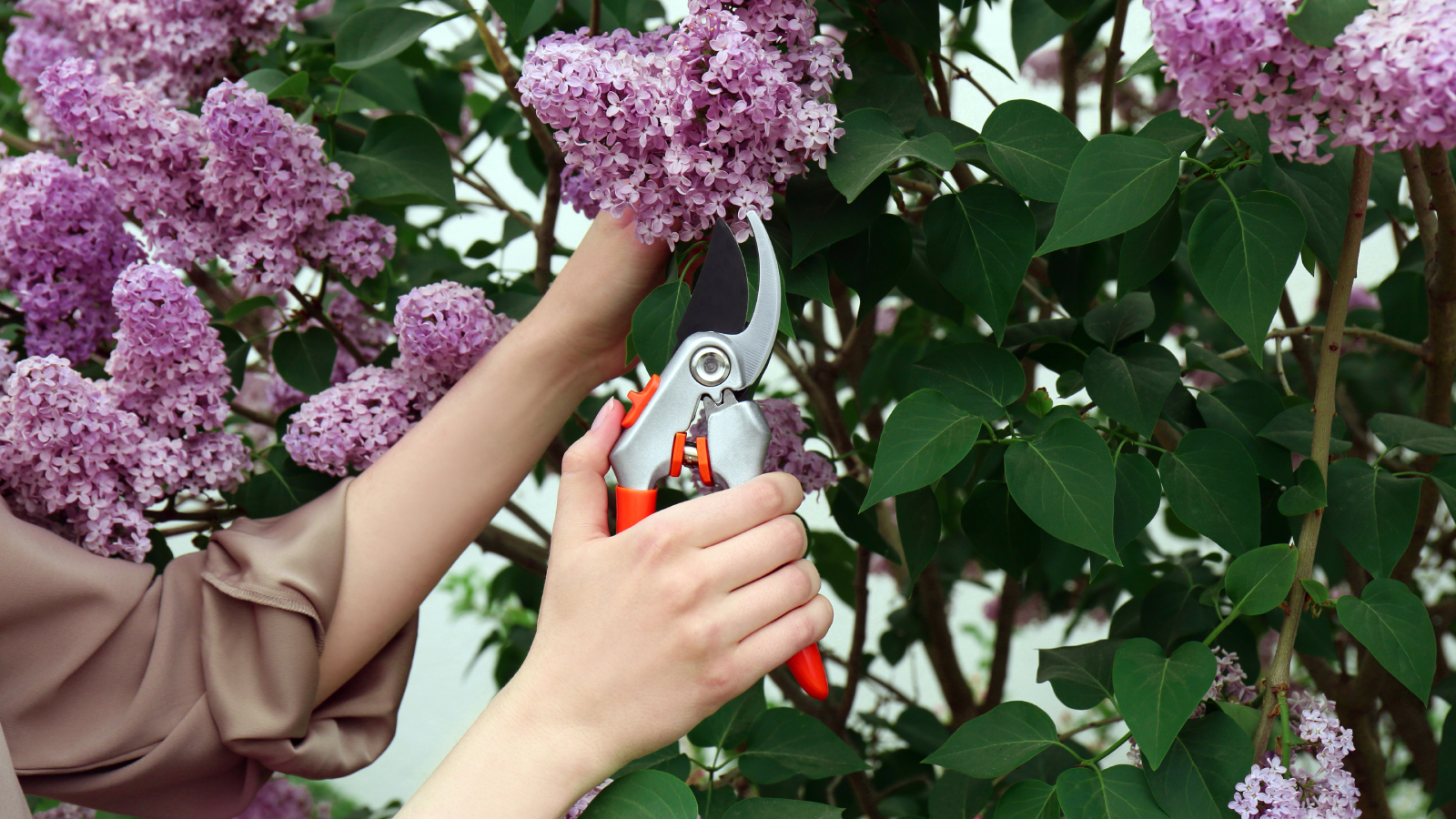How To Prune A Lilac Bush For A Neat & Tidy Shrub Full Of Spectacular Spring Blooms
Learning how to prune a lilac bush the right way is key to growing stunning shrubs full of flowers every spring. Here's how to keep lilacs looking their best.

Learning how to prune a lilac bush is one of the keys to growing strong, healthy shrubs that look good and bloom every year. Lilacs are not delicate or needy, but pruning them the right way is one of the basic elements of growing lilacs in your garden.
Lilacs are shrubs for all seasons. They're hardy, vigorous and intensely fragrant. Their blooms appear in late spring, generally in mid-May, and perfume the entire garden. Their height and foliage make them perfect for tall, flowering screens for summer and autumn.
To keep these wonderful shrubs looking their best for many years to come, you need to prune them. Let's take a look at how and when to trim lilac bushes for beautiful, healthy shrubs that produce tons of blooms.
Do You Need to Prune Lilac Bushes?
Learning the basics of pruning is important to growing almost any shrub, but especially lilacs. These classic spring-blooming bushes require regular pruning to look their best. Lilacs are relatively fast growing shrubs and they can become scraggly if left unpruned.
The lower branches of lilacs often get shaded out by upper growth and lose their leaves as a result. This creates a top-heavy appearance, but it's easy to remedy with proper pruning. It's best to begin pruning lilac bushes when they are young in order to shape them into your desired growth habit.
Pruning lilac bushes on a regular basis also keeps them from becoming too tall. Although there are smaller varieties that grow from 10 to 15 feet (3-4.5 m) tall, many lilacs can reach heights of about 30 feet (9 m) tall without regular pruning.

When to Trim Lilac Bushes
You may be wondering when to prune lilacs. Most lilacs don’t require pruning until they reach about 6 to 8 feet (2-2.5 m) tall.
Sign up for the Gardening Know How newsletter today and receive a free copy of our e-book "How to Grow Delicious Tomatoes".
The best time for pruning a lilac is when its flowers have finished and have faded. Don’t wait until summer or fall but instead prune them when they have finished blooming in late spring. This allows new shoots plenty of time to develop the next season of blooms. Pruning shrubs too late can kill young developing buds and it's one of the most common reasons why a lilac won't bloom.
Even if you want to simply do a light pruning, don’t wait until the lilac goes dormant. If you need to give lilacs a rejuvenation pruning to within inches of the ground, it is also best to do so in early spring.
New shoots will develop during the regular growing season as long as there are a few healthy shoots left. Once the growing season has ended, remove any unsightly shoots.
The exception to this rule is when you use the three-year rejuvenation or renovation pruning plan, which we'll get into later. This kind of drastic pruning should be done in late winter. With renovation pruning you remove entire stems, so losing the flower buds becomes less important.

How to Prune Lilacs
Many flowering shrubs bloom best on new growth and lilacs are one of them. The older the branch, the fewer flowers it’s likely to produce. So, pruning lilac bushes with a set of pruners - like the Felco F6 seen on Amazon - is an essential part of their annual maintenance if you want lots of blooms.
When pruning lilacs, heading back or just cutting the tops off of overgrown stems is often not enough. It’s generally better to cut the entire stem. Always trim lilacs with clean clippers. Remove spent blooms all the way to the stems to prevent seeding and encourage more blooms.
Cut back a third of the branches. Prune out any shoots growing near the ground that are sprouting from the main trunk. In order to improve air circulation or to allow more light to filter through, trimming lilacs within the inner branches may also be necessary.
If you’ve inherited an overgrown lilac or allowed your shrub to become lanky, your shrubs may require rejuvenation pruning, which we'll cover later.
Regular Maintenance Pruning
Annual pruning keeps lilacs healthy and lovely. The idea is to remove one or two of the oldest stems near to the ground. Keep in mind that the shrub should have a fountain shape rather than having many stems on one side and few on the other. The look should be balanced with equal weight on either side.
Once you trim the lower branches, use thinning cuts to prune the bush. This type of pruning starts at the top of the bush. Cut close to where one branch meets or crosses another to let light and air pass through. Cut out all dead or damaged stems.

Rejuvenation Pruning
If you're dealing with a neglected lilac, they need pruning and they need it fast. You can renew these overgrown bushes over three years and change them into vigorous, attractive plants. Think of this as a three-year pruning cycle.
The first year, prune back the lilac shrub by cutting out one third of the largest, thickest stems. Cut these in late winter or early spring, making the cut close to the ground. Take the time to trim out any dead or unhealthy branches. The second winter, remove another one-third of the stems. The third year, trim back the final third of thick branches.
You can also use this three-year plan for maintenance pruning. If you start when shrubs are young, simply continue the cycle every year. This will keep down the height of the shrub since the heaviest, thickest stems are also often the tallest parts of the shrub. Gradually remove them to bring down the overall height of the shrub.
Renovation Pruning
Here’s a more drastic way to renovate an overgrown lilac shrub. Renovation pruning means cutting the entire bush back significantly. This should be done in late winter. Make the stem cuts some 6-8 inches (15-20 cm) off the ground.
While you will not have flowers during that growing season, many shoots will develop after this pruning. The following winter you can select a handful of the strongest shoots to provide a new framework for the old shrub.

Nikki Tilley has been gardening for nearly three decades. The former Senior Editor and Archivist of Gardening Know How, Nikki has also authored six gardening books.

